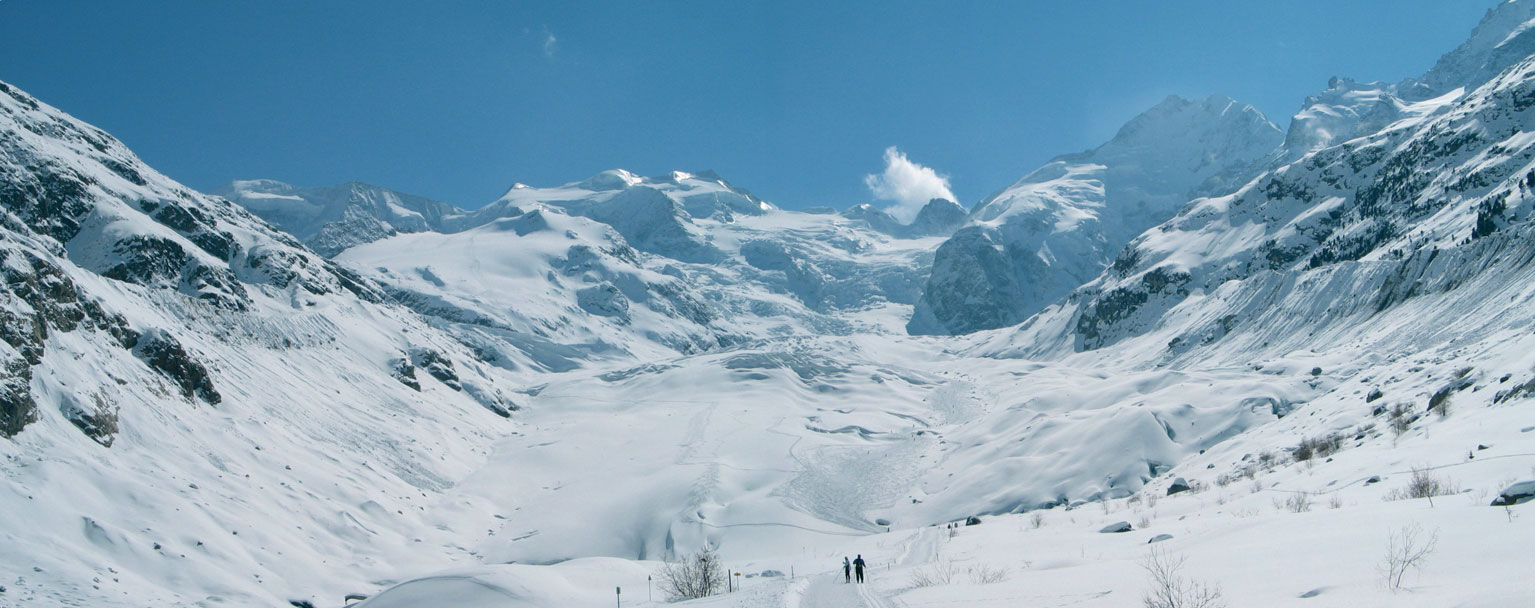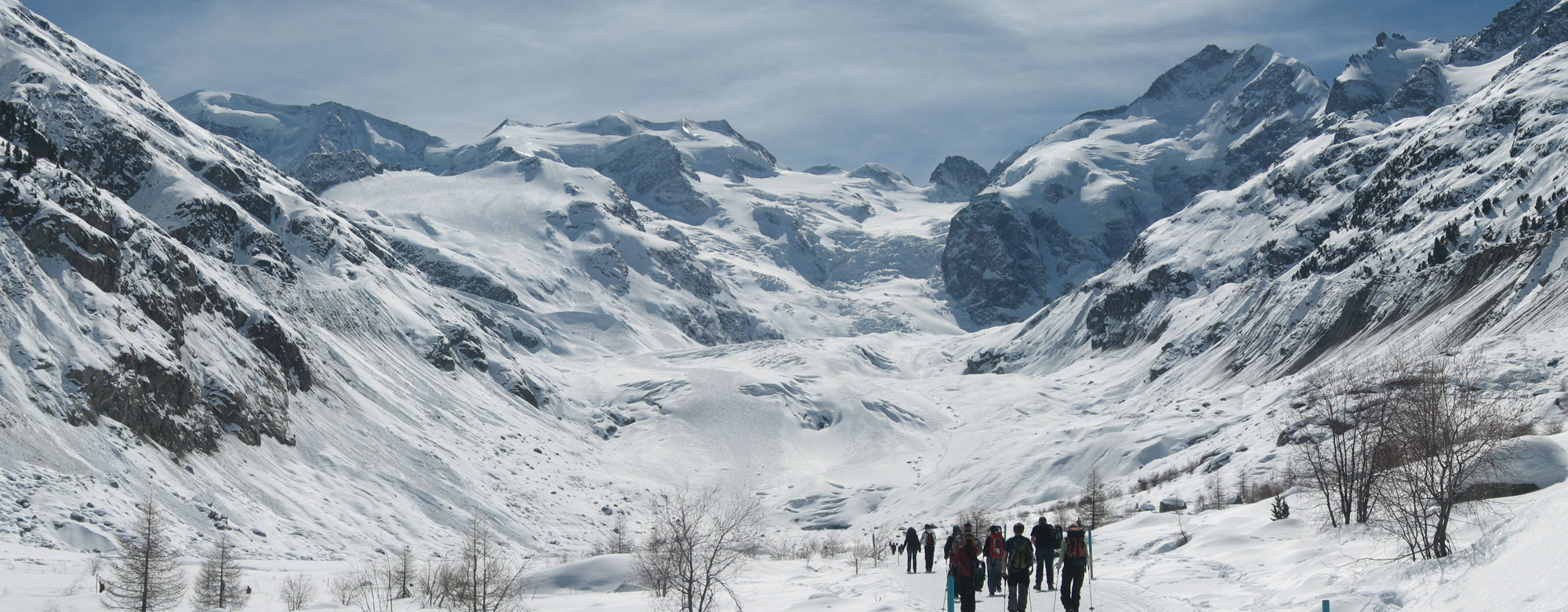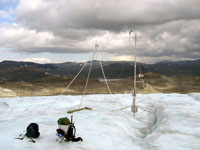IASC Workshop on the use of automatic measuring systems on glaciers
23 - 26 March, Pontresina, Switzerland
Objective
In the last decade the amount of (automated) measurements carried out on and near glaciers used has increased significantly. These systems range from: Automatic Weather Stations (AWS); ice velocity observations using GPS, time lapse camera's, and other techniques; different radar techniques including time lapse imaging to monitor snow layers, bedrock topography and other bed properties; time lapse camera's to monitor glacial behavior such as calving and changing surface conditions; monitoring of seismic activity; monitoring of hydrological processes such as supraglacial lake levels and drainage events, borehole monitoring systems for subglacial hydrology, proglacial runoff and water quality; and many more.
The in situ observations are essential for a correct estimation of the mass budget of glaciers but also for validation of mass balance, meteorological and ice dynamical models, and validation of remote sensing products. Besides measurements of standard meteorological quantities, there is a need for automatically measuring variables that are directly related to components of the mass budget (e.g. characteristics of the snowpack such as grain size and density), or that are related to ice dynamics (e.g. ice velocity, hydraulics, but also calving).
When operating a system on and near glaciers many problems are encountered related to the harsh conditions on and near glaciers and accessibility of the measurement site. Examples of the encountered problems range from power supply, unstable service, riming and icing, accessibility, to tourists, etc. With the development of networked techniques a whole new set of issues for power supply, data management, and in-stream data mining are encountered. Furthermore, when required information changes, the monitoring systems change and become more sophisticated, making them more sensitive to the mentioned problems. On the other hand, technical developments and improvements also makes more possible.
This workshop intends to bring together cryospheric scientists from all over the world, who use automated systems on glaciers or wish to start using them to discuss the above raised issues. During the workshop the participants will be given the opportunity to present their system and/or plans and to share experience with others in short presentations and discussion groups. The focus will be on ground based measurements of all glacier mass balance, energy balance and ice dynamics related parameters.
Contact information
The workshop is organized by:
Carleen Reijmer and Hans Oerlemans
Institute for Marine and Atmospheric Research Utrecht (IMAU)
Utrecht University
Princetonplein 5, 3584 CC Utrecht
PO box 80000, 3508 TA Utrecht
The Netherlands
Please direct your email to: c.h.tijm-reijmer @ uu.nl
![]() This workshop is sponsored by the International Arctic Science Committee (IASC)
This workshop is sponsored by the International Arctic Science Committee (IASC)
General information
Below you will find practical information about location, registration, accommodation, abstracts, presentations etc.
Location and dates
The meeting will take place in the -->
Rondo convention centre--> in Pontresina, and will take four days, from 23 to 26 March 2011. During these four
days the first three days are available for presentations and discussions. On the last day (when weather permits)
an excursion will be organized to the automatic weather station
operated by IMAU on the Morteratschgletscher. Details about the excursion will be supplied later to those that have registered.
For those that plan to combine this workshop with holidays: there is an excellent
rental service in Pontresina, also for all kinds of mountaineering equipment.
Extended Abstracts
Our intention is to summarize the workshop in a book of extended abstracts. The extended abstract will not undergo any review. If you want to contribute please send us the extended abstract no later than 1 June 2011. The extended abstract may contain about 2 (color) figures. Please send us the text as a word document (keep lay-out to a minimum; it will be adjusted) and the figures separately in jpg-format. (see THIS website for an example book of extended abstracts of a similar meeting in 2004.)
Purpose
When deciding on your subject of presentation remember
the purpose of this workshop, which is first of all an exchange of information.
Running automated systems on glaciers has many typical problems (logistics, power supply,
bad weather, unstable surface, tourists, etc.), and it can be very helpful
to hear from others how these problems have been solved (or not).
The idea is to make relatively short presentations on the equipment and how
it is used - not scientific presentations on research work done with the data.
So data can be discussed, but more to illustrate the possibilities or the problems.
Excursion
The excursion will be to the Vadret da Morteratsch. On the snout of this glacier an AWS has been running since October 1995. We will visit the station and enjoy the scenery.
Program and participants
Download the pdf-file with the program and the list of participants HERE (Updated 13 April 2011).

The extended abstracts
Download the pdf-file with all the extended abstracts, HERE (pdf, 14.8 Mb). Note that in a few weeks the book will become available in hard copy to the participants.
Links to useful web pages
Photos
Photos are available HERE
Find the differences

2004

2011
Subjects

AWS on Hardangerjökulen, Norway, at the end of a very warm summer (September 2002). Photo W. Boot.

GPS flow observations (April 2006). Photo C.H. Reijmer.
Repeat photography